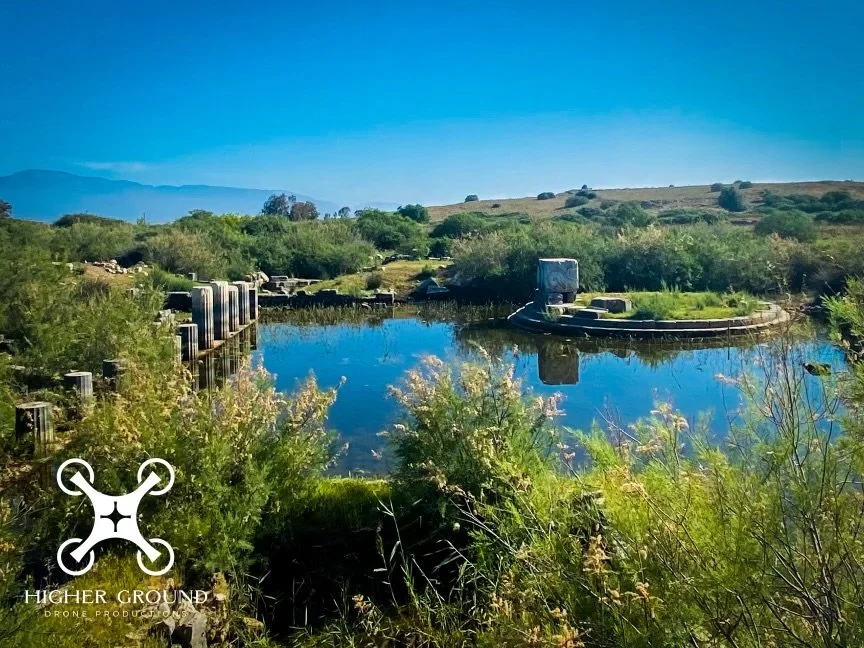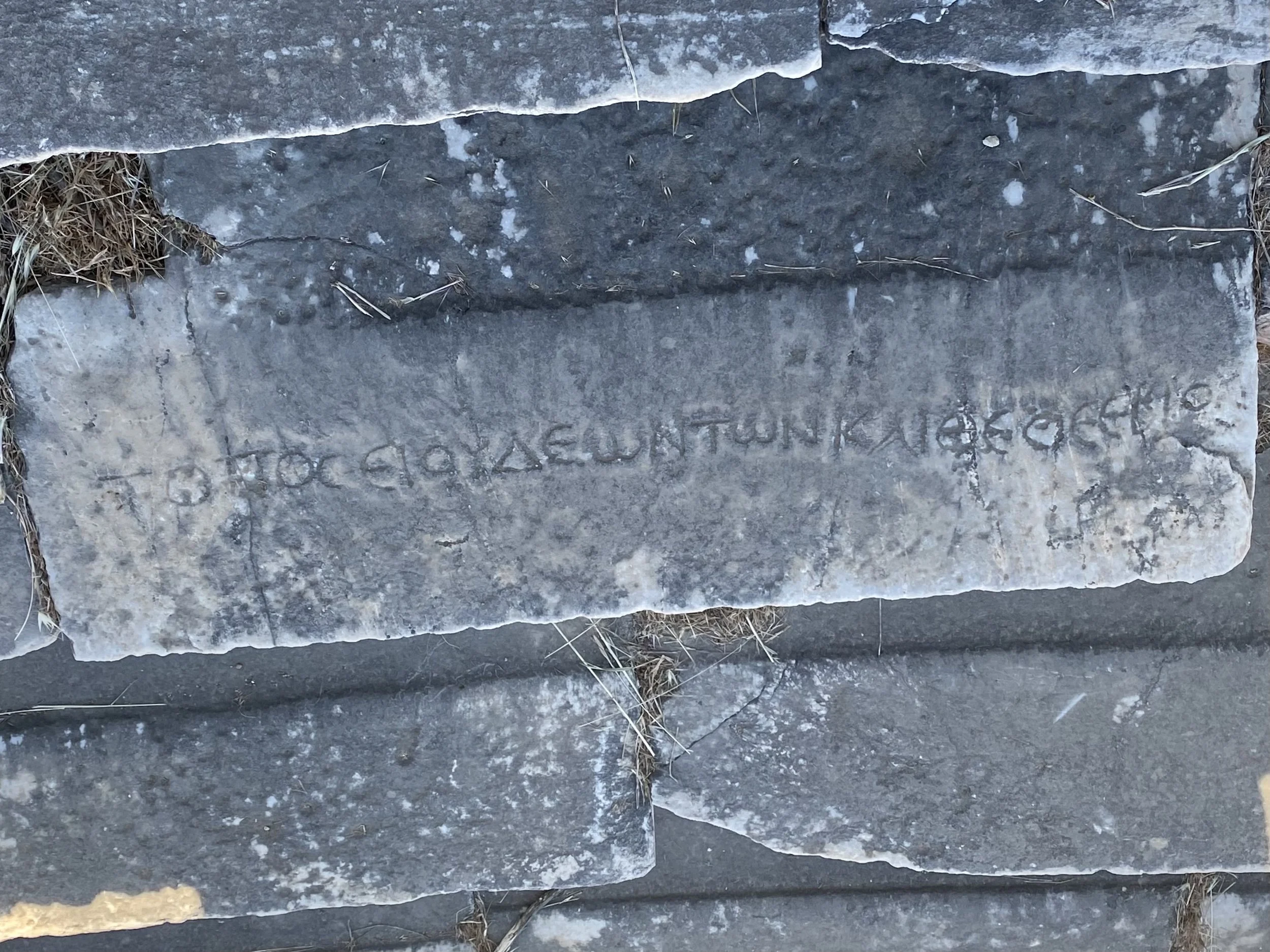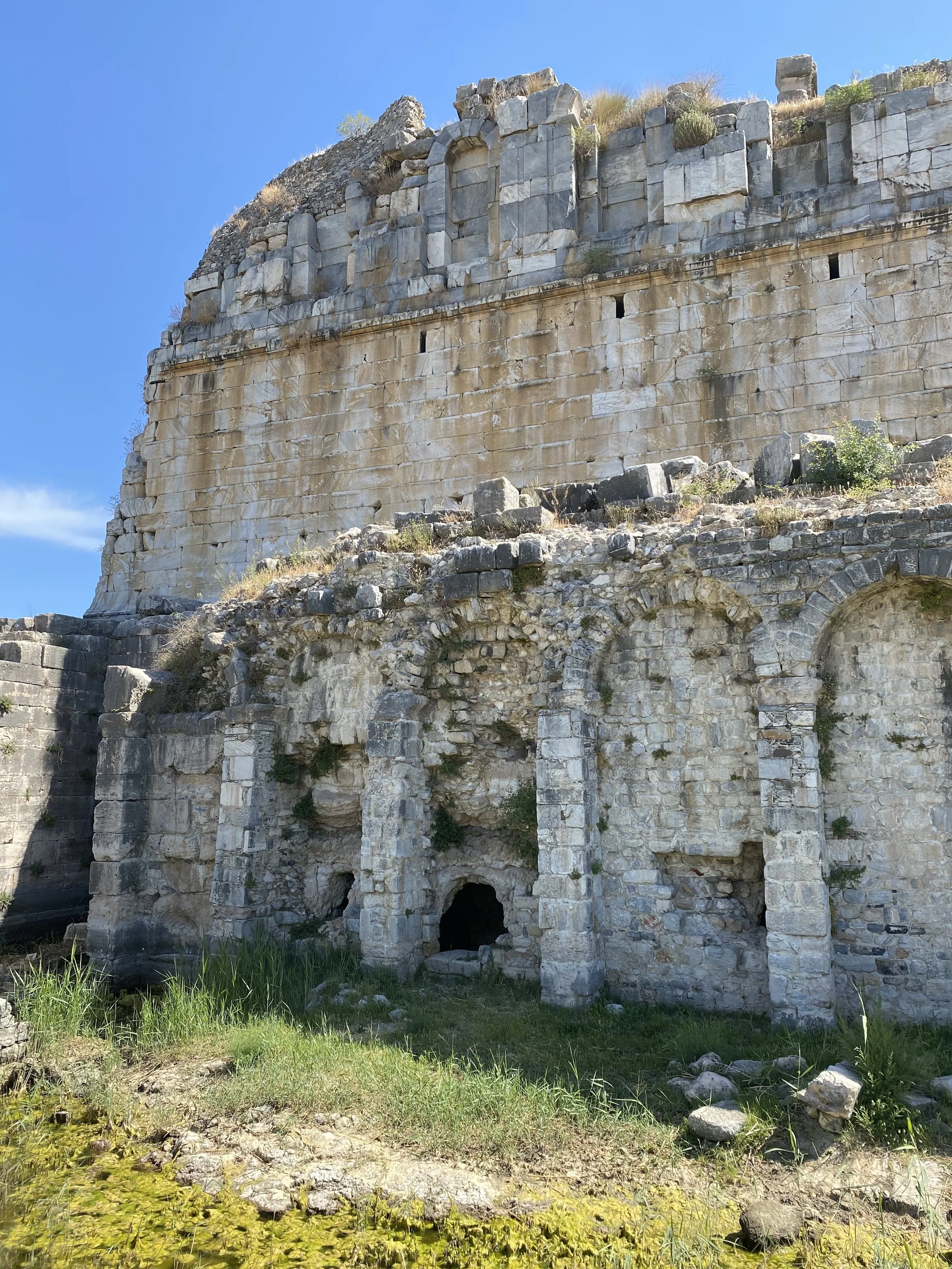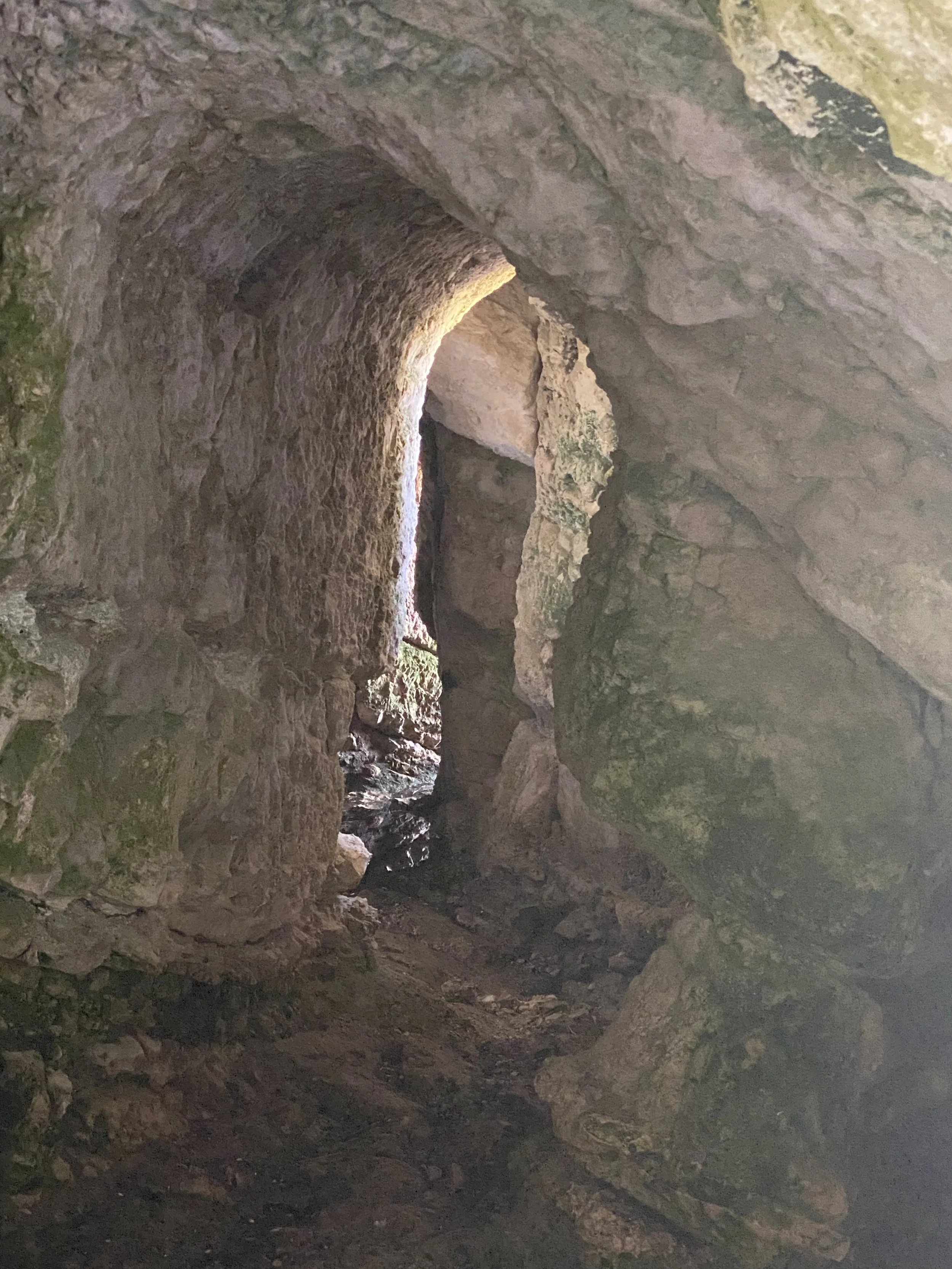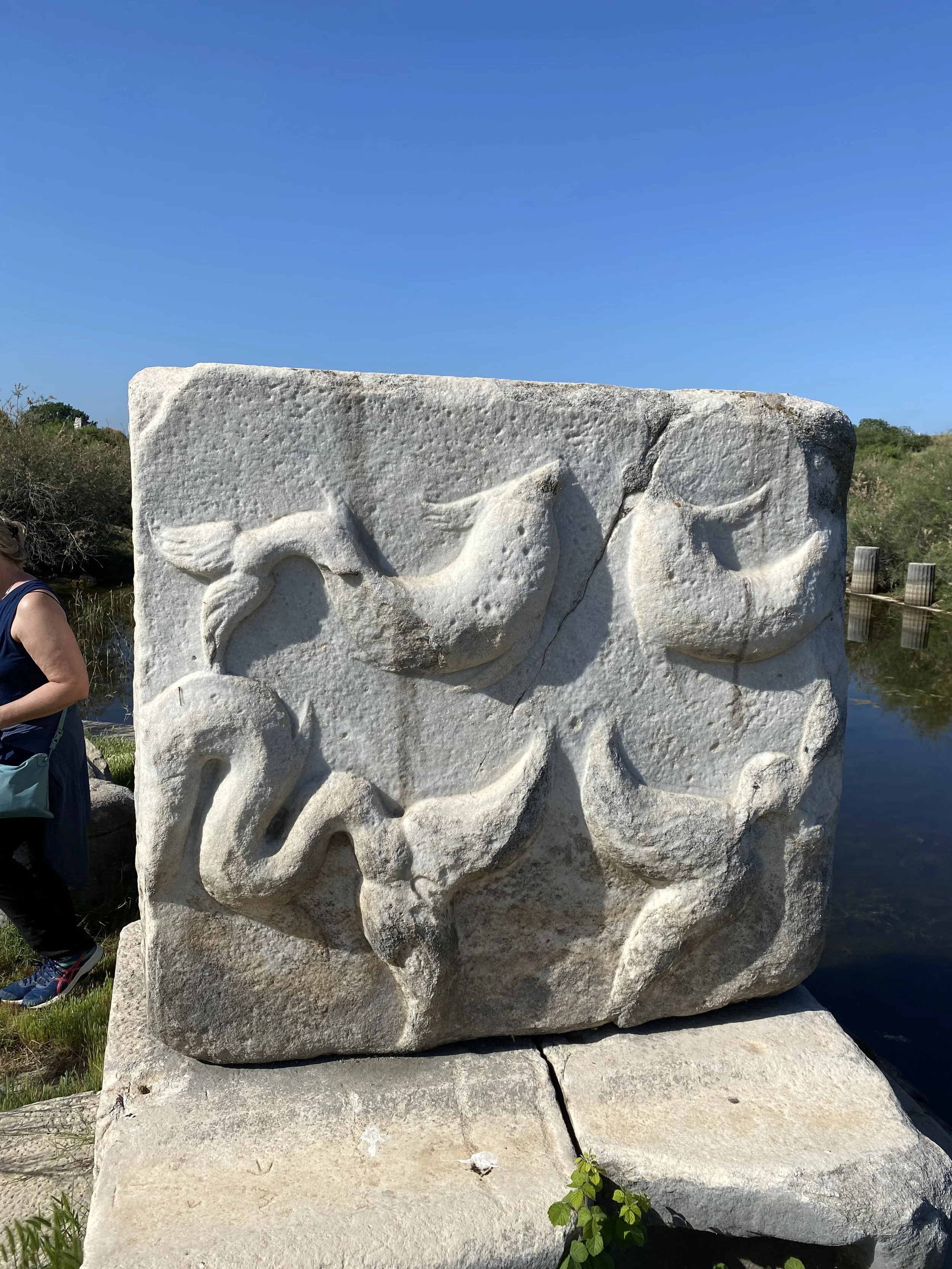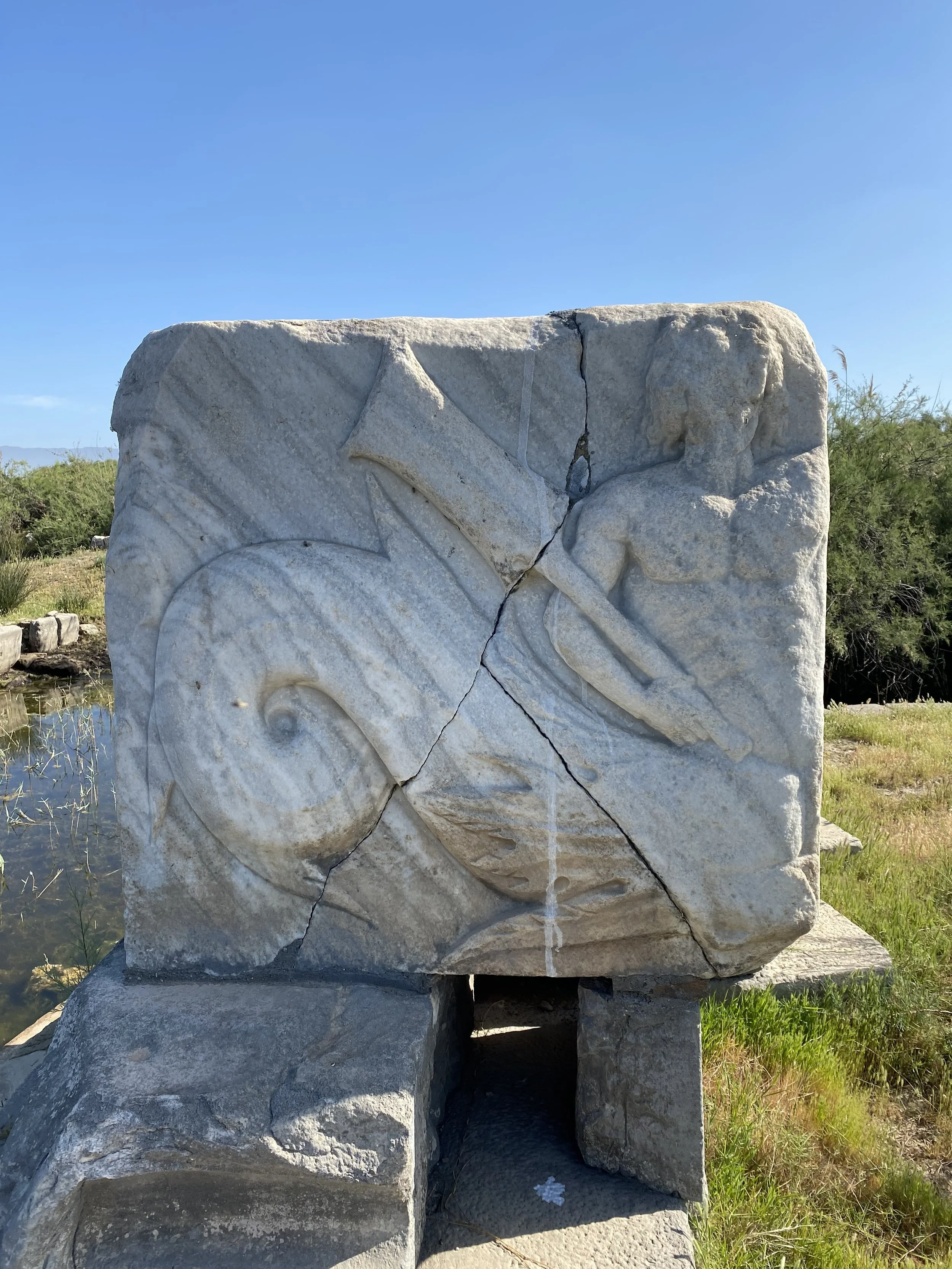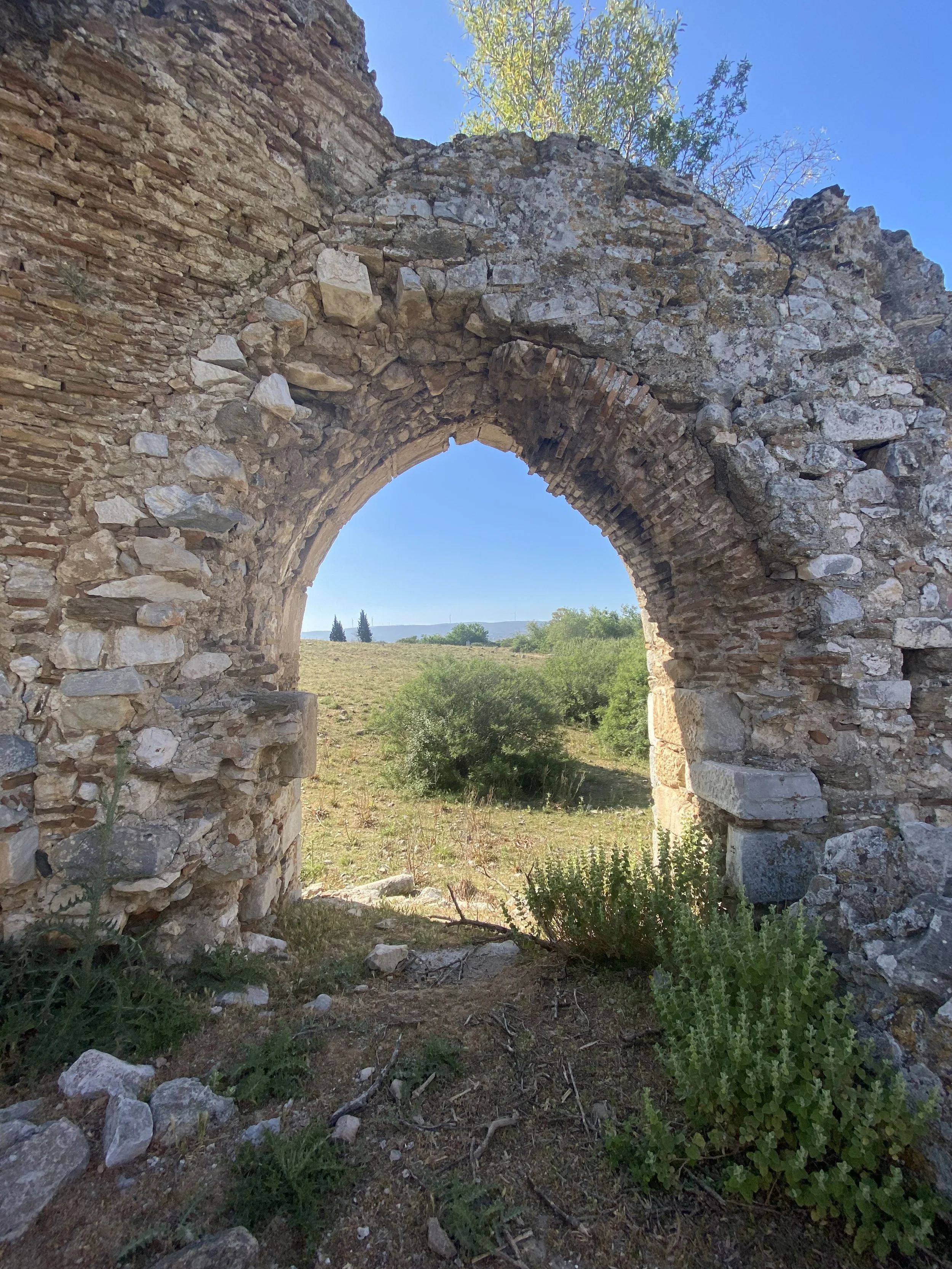Miletus (Balat, Turkey)
“Now from Miletus he [Paul] sent to Ephesus and called the elders of the church to come to him.” Acts 20:17
Paul is at the end of his 3rd missionary journey and traveling back to Jerusalem where he feels certain that trial and imprisonment await. He has sailed to Miletus and calls the elders from the church at Ephesus to come meet with him before he sails on. What follows is a heartfelt farewell and encouragement to be vigilant in the care of the fledgling Christian church.
We’ve visited the archeological site of Miletus twice, in 2021 and in 2023. We enjoyed that this site is quite a bit less tidied up than, for example, Ephesus. It feels like more of an exploration. Much of the area is swampy and wet, and the rest is an obstacle course of sheep poop, nettles and plenty of flies (and last year even a few bulls)! But there is a main path that is leveled and graveled if you aren’t in the mood for all of that fun!
Miletus was an important and impressive city in the hellenistic era. It sat near the mouth of the Meander river on a peninsula and had 4 harbors There are numerous temples and stoas and shops and the theater which would have been there in Paul’s time. As its ports became more and more silted in, it lost importance during the Roman period. There was obviously a port for Paul to sail into, but later in the 1st century AD Miletus became more surrounded by marsh than sea, and one of the harbor areas is in modern times is a lake fully shut off from the sea. Miletus is now at least 5 miles from the sea and the ruin feels very much out in the country all on its own.
Miletus is the home town of a few early philosophers and architects (Thales - philosophy, Isidorus - an architect) and Hippodamus after whom the “Hippodamian grid” of streets laid out at right angles is named for.
The theater is the first large structure you come to after passing through the ticket office and it has a fabulous view of the surrounding area and the site. It was first built in the 4th century BC and enlarged several times. From what we’ve read, several of the upper galleries are now missing, but it is still a high theater. You can see two pillars at the bottom row that marked fancy seating for emperors and other people of importance. Inscriptions on the seats seem to indicate “reserved seating” and the famous seat inscription is the one that translates “Place of the Jews and the God fearers”. There are inscriptions on the outside of the upper left entrance (facing the theater) with names of archangels and some type of incantation from an era long after Paul. At the front of the theater, small entrances at the base lead to an early sort of healing sanctuary. Votives and ceramic body parts were found here. You can still see the niches carved into the wall. It is anything but healthy now - lots of green slime and very slippery - visit with caution!
Moving into the site from the back of the theater, there are remains of a harbor monument that was covered with tridents and dolphins. To the west side of this is an area identified as a synagogue. It has been too wet to walk over there each time we visited. The structure that stands out the most is an ionic stoa partially still standing on the sacred way. Very near that is the Delphinium, a nymphaeum and a bouleuterion just before entering the south agora. The famous market gate is at the Berlin museum and honestly we haven’t figured out where it was in relation to the ruins of the site. After the south agora, there are remains of a basilica and some christian symbols carved into pillars there. The temple of Serapis is interesting and still holds a stone carving of Helios. The Baths of Faustina have statues of lions and of the river god Meander.
So much more to see at this site - we’ve wished we had the whole day to explore!
Miletus, Turkey. Harbor monument

